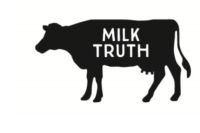Protein is getting a fresh look in nutrition circles and it’s catching on with consumers.
Protein is getting a fresh look in nutrition circles and it’s catching on with consumers.
Long a key nutrient in the health portfolio of milk and dairy foods, a plethora of studies on protein drinks and supplements are creating considerable attention for protein’s ability to control appetite, optimize muscle mass and help with blood glucose control, weight management, sports recovery and even bone health.
Consumers are reacting by increasing their protein intakes and seeking out products that boast high-quality protein, such as whey. Approximately one half of Americans say they are trying to consume more protein, according to the 2010 Food and Health Survey conducted by the International Food Information Council.
Expanding our thinking of protein
There are a couple of shifts occurring that provide vast potential for future milk and milk-product education and marketing efforts. According to Dairy Council of California’s “Health Connections” newsletter editor Mary Jo Feeney, the first shift is the rethinking of protein as a macronutrient (an essential nutrient required in large amounts for optimal health). For the first time, the 2010 Dietary Guidelines Advisory Committee looked at the relationship between protein and health outcomes. Past committees did not consider protein separately because average protein intake was considered adequate. With obesity continuing to be a public-health challenge and with new research demonstrating the array of benefits of protein, the role of high-quality protein in weight loss is getting a second look.
Another shift comes from research that recommends spreading protein intake throughout the day and consuming approximately equal amounts at each meal rather than our current habit of “end-loading” our day with protein, or eating most of our daily protein at dinner.
For “Health Connections,” we recently discussed this with Douglas Paddon-Jones, with the Department of Physical Therapy and Internal Medicine at the University of Texas Medical Branch, Galveston. According to Paddon-Jones, the problem is that we take in more than the Recommended Daily Allowance for protein during certain meals-typically dinner. His research shows that about four ounces of high-quality, protein-rich food is the maximum amount of protein that can be used by the body at one time. Exceeding this amount, which we inevitably do with end-loading, is like “trying to put 90 gallons of fuel into a 30-gallon tank – it spills over.” Shifting some of the protein consumed at dinner throughout the day’s meals and snacks will help optimize the potential for muscle growth and other benefits.
Distributing protein intake throughout the day is an opportunity for milk and milk products as it could lead to some dietary-pattern changes as consumers incorporate more high-quality protein foods, such as milk, yogurt and cheese, into their breakfast and lunch meals.
The primary source of animal protein
Seeing the potential in a fresh positioning for protein, Dairy Council of California teamed with the Food Science & Nutrition Department at California Polytechnic State University, San Luis Obispo, to conduct targeted research to quantify protein intakes in adults, identify primary sources of protein and assess daily patterns of protein intake. Here are a few of the key research findings:
• Average protein intake in older adults is much lower than in younger adults.
• Across ages and gender, animal sources of protein provide at least 60% of total protein intake, with milk and milk products being the biggest provider of animal protein.
• Participants who took in more protein from animal foods were more likely to meet the protein recommendations.
• The distribution of protein throughout the day was not optimal, with intake at dinner making up about one-half of total daily intake.
This research presents opportunities to encourage higher protein intakes, especially in older adults who may not be meeting their needs; to highlight the importance of dairy foods as a primary source of high-quality protein; and to work with consumers to optimize their protein intakes throughout the day.
Protein is one of many nutrients found in milk and milk products that contribute to optimal health. It is important as an industry that we take what we learn from research and pass it on to the consumer. The staff at Dairy Council of California does this daily through our school and health professional nutrition education programs, and online through our websites, social and traditional media channels. Together, we should look for opportunities to put a fresh face on protein as a superstar dairy nutrient.
Peggy Biltz is chief executive officer of the Dairy Council of California, Sacramento, Calif.
Get our new eMagazine delivered to your inbox every month.
Stay in the know on the latest dairy industry trends.
SUBSCRIBE TODAYCopyright ©2024. All Rights Reserved BNP Media.
Design, CMS, Hosting & Web Development :: ePublishing

